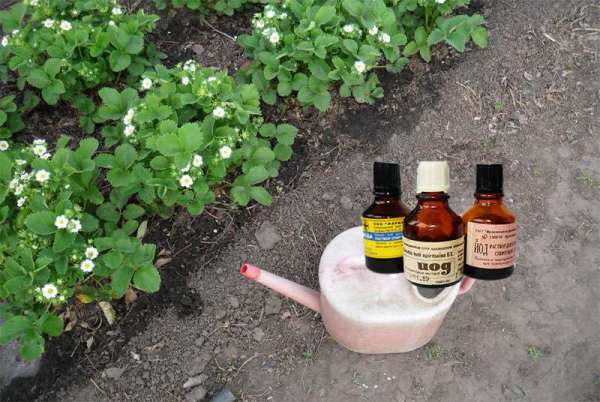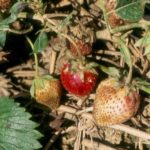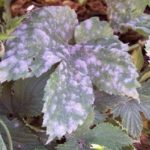Timely and proper nutrition - the key to a good harvest of strawberries. She should receive fertilizer at least three times a year: in the spring, at the beginning of the growing season, in the summer, during flowering and in the autumn, before preparing for the winter. But, for some reason, the majority of gardeners ignore such an important stage of feeding during the flowering period of strawberries - because then it needs additional forces. In this review we will look at how to feed strawberries during the flowering with boric acid and iodine.
Table of contents
Why do you need to feed strawberries during flowering
Nutrients need strawberries all year round. This is especially true when it is grown on the same place for many years in a row. Additional replenishment is especially important during the flowering period, since the entire crop depends on how the ovaries and inflorescences are formed.
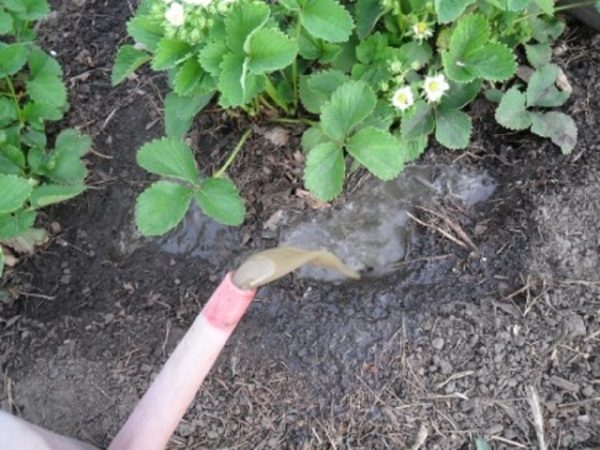
The main purpose of feeding is to restore the balance of nutrients in the soil. Choosing the right fertilizer depends on many factors, such as:
- The composition of the soil.
- Weather.
- The state of the plant.
- Age of plants.
During the flowering period, strawberries are actively developing and require special attention, care and care. There are a large number of special mineral fertilizers, but still popular and popular fertilizers, such as ash, boric acid, manure, herbal infusions, iodine, chicken manure.
Agrochemicals are fertilizers of chemical or biological origin that are used to nourish plants, soil, and also to control pests. Misuse of them in the above dosages may cause more harm than good.
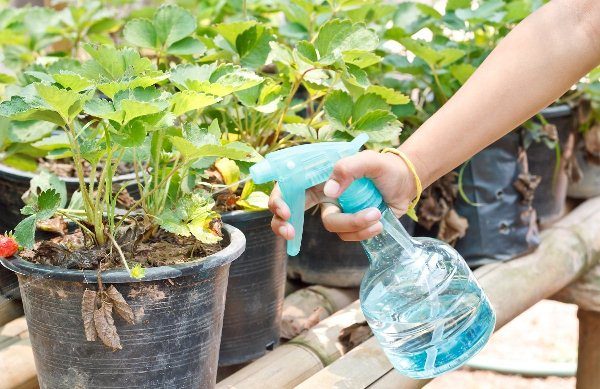
During flowering strawberries are best fertilized with organic root or sub-root method. Root top dressing - the solution is introduced into the soil, and foliar - the bushes are irrigated from above with nutrient compositions.
All fertilizers should be applied only in diluted form and strictly adhering to proportions. With all the safety of funds, you should try not to fall into the flowers and berries as much as possible — only the stems and leaves, preferably the lower ones, should be sprayed. Fertilizers need to be applied to wet soil - the day after heavy rain or watering and during the daytime.
If strawberries are given top dressing during flowering, then a large crop of large and tasty berries is guaranteed, because it is during this period that the greatest susceptibility to fertilizer.
Boric acid for feeding strawberries during flowering in spring
Feeding strawberries with boric acid during flowering helps to improve the nutrition of the ovaries and increases the resistance of the plant to adverse weather conditions, like for potatoes and tomatoes. Fruits become sweeter and denser, so they do not crack from moisture. Best of all, boric acid as a fertilizer works on sod-podzolic and peat soils.
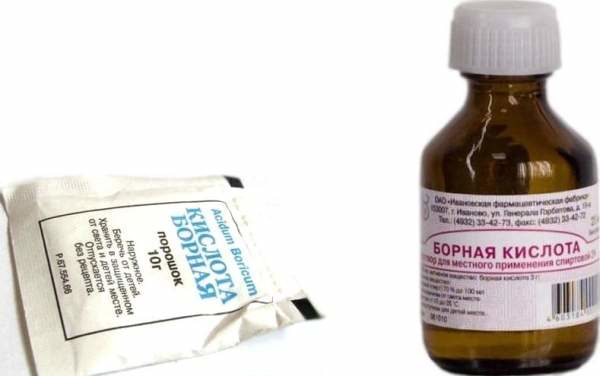
Boric acid is an antiseptic that is sold in a pharmacy and has the form of release: solution or powder. Typically, recipes indicate the dosage of boric acid in grams, and if you use an alcohol solution, you need to determine how many milliliters of the solution is 1 gram of boric acid. The standard does not exist, since the solutions are produced with different boron contents. If powder is used in gardening, it must first be dissolved in a small amount of hot water.
Boric acid has neither color, nor taste, nor smell - this is its danger, because it refers to poisons and its overdose can be determined only by negative consequences.
Strawberry is a perennial plant requiring bright sunshine, rich and moist soil, in which mold and fungi are often found.They adversely affect the taste and quality of the fruit and to prevent this, it is necessary to process its bushes with a solution of boric acid.
Symptoms of boron deficiency
Strawberries are treated with boric acid even when it lacks boron, an important trace element necessary for normal plant life. This is expressed in the following:
- Leaves dry around the edges.
- The plant becomes sluggish even with good watering.
- Leaves are deformed and showered.
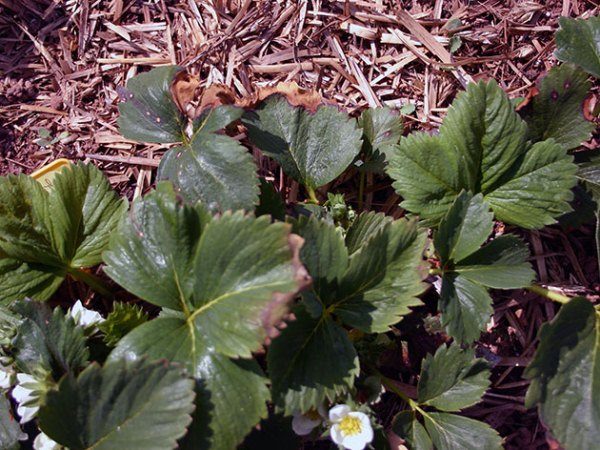
For feeding strawberries take 1 g of boric acid and 1 g of potassium permanganate per 10 liters of water. This solution should be watered only at the beginning of flowering, or after the plant has ceased to bear fruit.
Fertilizer recipe
Also an effective recipe for such root feeding: 2 grams of boric acid, 2 grams of potassium permanganate and 1 cup of ash are dissolved in 10 liters of water - it has a double effect, since ash is an organic potassium phosphate fertilizer.
Boric acid as a fertilizer helps to supply the roots with oxygen, it improves metabolic processes and improves the quality of the penetration of potassium from the soil into all plant fibers, which affects the shelf life of fruits.
To prepare the solution for watering You need to take 1 bag of pharmaceutical boric acid (10 grams) and dilute it in 30 liters of water. To process this solution should be on the already known rule - on the lower leaves.
Iodine - an indispensable tool for the care of strawberries, recipes and recommendations
Iodine is a well-known antiseptic that is commonly used for domestic purposes: disinfection of wounds and cuts. But it turns out that its use in the garden can protect against many diseases, such as the appearance of blight, rot, powdery mildew and not only.
- Gray rot on strawberries
- Signs of late blight on strawberries
- Strawberry bush struck with powdery mildew
To get a good harvest of strawberries, iodine as a fertilizer is necessary to use, because of this:
- increases plant immunity, they become more resistant to diseases
- more efficiently happening budding process;
- is increasing number of ovaries;
- preservation and keeping quality of fruits;
- yield increases, and the fruits become large and tasty.
Preparation of the solution, proportions
Iodine is a trace element that is found in many microorganisms and its presence in strawberry bites depends on whether it is in the soil and groundwater; if not, fertilizing is needed. Its shortage is determined by such external signs - a delay in fruiting, rotting of the ovaries, the appearance of powdery mildew, gray rot.
For root fertilizer, it is better to make warm solutions and to increase the efficiency of adding wood ash. This enriched fluid needs to be watered 500 ml under one bushto get the desired result.
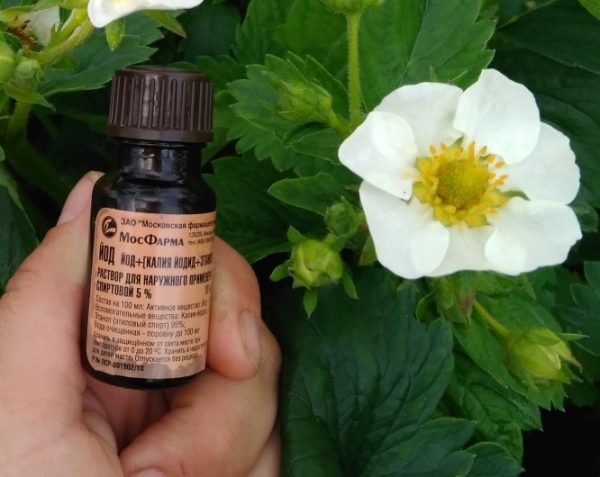
For yield and quality of fruits with iodine, it is necessary to process the plants during the flowering period.It is better to carry out this procedure in cloudy weather, or at night, since iodine in a duet with a bright sun can burn leaves.
For root fertilizer, you can use this solution: 1 cup of wood ash pour 2 cups of boiling water - insist 2 hours. Add to this tincture 2 grams of potassium permanganate (not a solution, but crystals), 3 grams of boric acid, 10 drops of iodine and pour 10 liters of warm distilled water (necessarily dechlorinated) water. The principle of the fertilizer process: 1 250 ml glass under one bush.
The only drawback of pharmacy iodine is that it is practically unable to enrich the soil. That is, they can fertilize only strawberries, and for enriching the soil it is better to use mineral fertilizers with iodine, but not during flowering, but in spring.
Strawberries must be fertilized during flowering and it should be done only with organic and proven means. Iodine and boric acid - safe and effective means - most importantly, follow the dosages and recommendations for use, and then the strawberries will delight the rich harvest of tasty and sweet berries.
